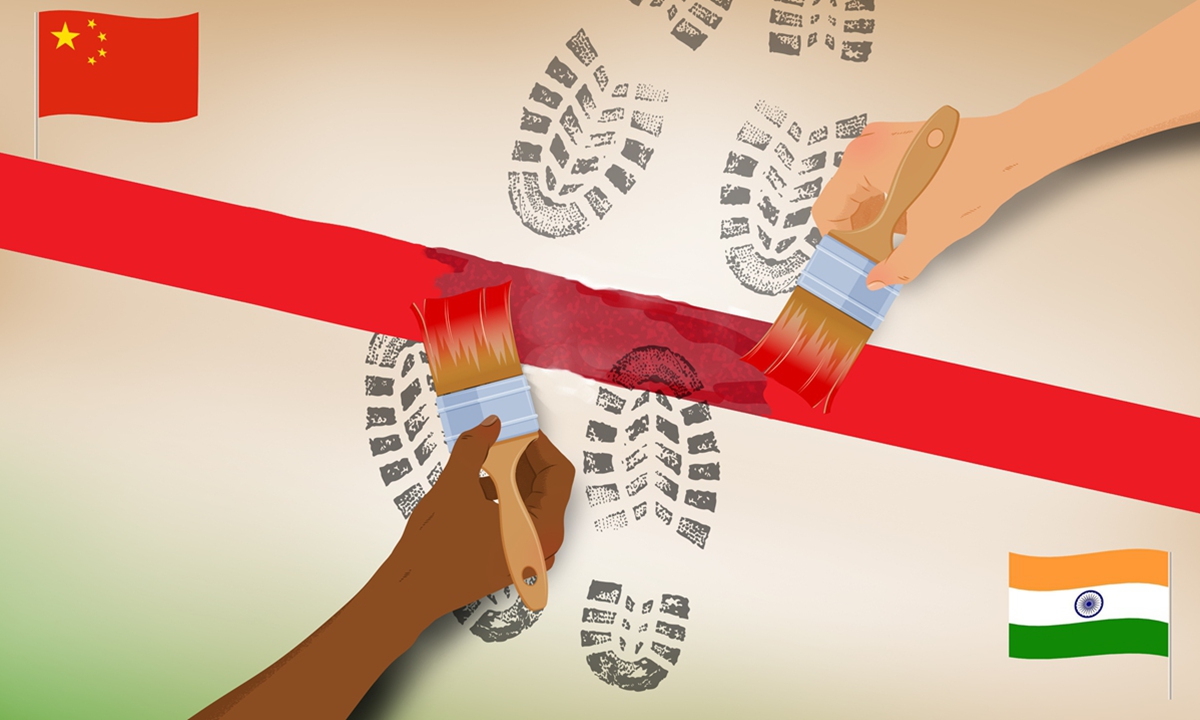 By Xie Chao (Global Times, 23 September 2020) – Senior Chinese and Indian officers held the sixth round of the military commander-level meeting on Monday. Before that, a speculation went viral that the talks might have to be postponed due to increasing hostilities on both sides. To the relief of observers, the talks took place and both sides confirmed that the seventh round of the meetings will be held as soon as possible, which shows a mutual willingness to continue to talk to ease border tensions.
By Xie Chao (Global Times, 23 September 2020) – Senior Chinese and Indian officers held the sixth round of the military commander-level meeting on Monday. Before that, a speculation went viral that the talks might have to be postponed due to increasing hostilities on both sides. To the relief of observers, the talks took place and both sides confirmed that the seventh round of the meetings will be held as soon as possible, which shows a mutual willingness to continue to talk to ease border tensions.
The two countries also reached a consensus to stop sending more troops to the frontline, which at least can cool down the rising temperature of confrontation, thus tensions along the China-India border may take a pause. People who are concerned with the situation can feel a little more at ease. However, it is hard to expect a comprehensive agreement to be reached in just one or two meetings.
And their joint press release made no mention of “complete disengagement” of their troops, which indicates that their previously reached consensus lost efficacy following continuous provocations from India. The sixth round of talks serves only to maintain the status quo, which is already very intense, and from that point they will find a possible agreement on disengagement. In other words, Beijing and New Delhi now need to start over to establish a new consensus through talks.
As a scholar on Indian studies, I have a particular interest on observing India’s way of negotiating. It entails asking for a wild price to create room for bargaining, which means it will take a farther way back but still expects to meet its counterpart halfway. In such cases, India doesn’t have to change its original stance, but still gives a concessional gesture. That is to say, it will make a concession that didn’t exist in the first place in exchange for its counterpart making the real concession. Otherwise, the latter will take the blame for reaching no deal.
Such a negotiation tactic has won India quite a few favorable conditions in its accession to international trade organizations, but little has been accomplished on military negotiations, especially on border talks, as India’s original stances have gone too far to infringe upon other’s sovereignty, and there is no room for its counterpart to give in. It will only force its counterpart to match the toughness or take the blame for no deal.
This holds true in its talks with China on the latest border situation. According to Indian media reports, sources from India said New Delhi insisted that the Chinese People’s Liberation Army withdraw from all friction points with a timeline, and give “free and unhindered access to Indian forces to all patrol points.”
This is the Indian tactic to strike a deal. New Delhi wishes for Beijing to accept the LAC determined by India, and to accept the consequences of a damaged sovereignty. Chinese diplomatic and military representatives have refuted such unreasonable requests. If India continues to stick to such stubborn stances, no frontline disengagement will ever occur, and all forthcoming negotiations and talks will be meaningless.
Reports have shown that a representative from the Indian Ministry of External Affairs also participated in the latest talks, and hopefully India’s attitude toward negotiations with China can come down to reality.
Indian strategists tend to believe that China has no ability and willingness to confront India amid strategic pressure from the US. They surely have their own way to calculate the risks and benefits, but certainly have misjudged China on this. China is protecting its home at its doorstep, and you can imagine how determined it is to push back against bullying from either the US or India. India tends to clamor about how aggressive China is, and such assertion only illuminates a paradox of logic: If India truly believes China is an aggressive power, what kind of aggressive power will China be if it can’t defend its own soil? The irony is such misjudgment shows only a lack of strategic vision of Indian strategists.
The Indian government is addicted to its usual tactic of displaying toughness, such as its war preparedness and the inclusion of Rafale fighter jets in the conflicting border areas. It is understandable for them to show a tough image to its own people, but such a display of Indian military muscle will have no effect. Beijing have far more superior weapons to deploy, but has not done so for the sake of mainlining peace and tranquility along the border areas.
The confrontation and hostility between China and India has lasted since May. There is no longer an ounce of mutual trust between China and India at the strategic level. There is good reason to believe that even with a temporary plan of disengagement, India will again make provocations when it perceives international environment is in its favor. At any time, Beijing has demonstrated its ability and willingness to match India’s military provocations. Given India’s constant provocations, China’s military deployments in relevant areas have now improved, and still have far more room for further improvement. The choice is in the hands of New Delhi.
The author is assistant professor at the Institute for International and Area Studies, Tsinghua University. [email protected]

